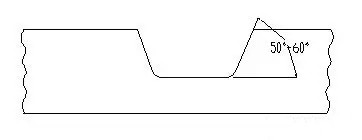The overlay welding(hardfacing) for valve sealing
Sealing surface is the key part of the valve, in the sealing surface surfacing welding a layer of a special alloy, that is, hard facing or overlaying, can improve the hardness of the valve sealing surface, wear resistance and corrosion resistance, reduce the cost, and improve the service life of the valve. The quality of the sealing surface directly affects the service life of valve. Choosing the material of the sealing surface reasonably is one of the important ways to improve the service life of the valve. If you want to obtain the required valve surfacing surface, it is necessary to select the appropriate base material (workpiece material) and welding method in strict accordance with the operating instructions and operating requirements.
Commonly used overlay welding alloys include cobalt-based alloys, nickel-based alloys, iron-based alloys and copper-based alloys. Cobalt-based alloy is most used in valves because of its good high-temperature performance, excellent thermal strength, wear resistance, corrosion resistance and heat resistance fatigue performance than that of iron or nickel-based alloy. These alloys can be made into the electrode, wire (including flux-cored wire), flux (transition alloy flux) and alloy powder, etc., using the methods like submerged arc automatic welding, manual arc welding, tungsten argon arc welding, plasma arc welding, oxygen-acetylene flame welding in all kinds of valve shell and sealing surface. The welding groove is shown in the following figure:

The materials used for overlay welding the valve sealing surface are electrode, welding wire or alloy powder, etc., which are generally selected according to the valve’s operating temperature, working pressure and corrosive medium, or the type of valve, sealing surface structure, sealing pressure and allowable pressure, or enterprise processing capacity and user requirements. Each valve is open and closed under different operating parameters, so different temperature, pressure, medium and valve sealing surface material has different requirements. The experimental results show that the wear resistance of the valve sealing surface material is determined by the structure of the metal material. Some metal materials with austenitic matrix and a small amount of hard structure have low hardness but good wear resistance. Valve sealing surface has a certain high hardness is to avoid hard sundries in the medium pad and scratch. Considering comprehensively, the hardness value HRC35~ 45 is appropriate.
Valve sealing surface and failure reasons:
| Valve type | Overlay welding part | Sealing surface type | Failure reasons |
| Gate valve | Seat, gate | The plane face | Abrasion – based, erosion |
| Check valve | Seat, disc | The plane face | Impact and erosion |
| High-temp ball valve | Seat | pyramidal face | Abrasion – based, erosion |
| Butterfly valve | Seat | pyramidal face | Erosion |
| Globe valve | Seat, disc | Plane or pyramidal | Erosion – based, abrasion |
| Pressure reducing valve | Seat, disc | Plane or pyramidal | Impact and erosion |
Due to the uneven temperature distribution of welds and the thermal expansion and cold contraction of weld metal, residual stress is inevitable during overlay welding. In order to relax the welding residual stress, stabilize the shape and size of the structure, reduce distortion, improve the performance of the base material and welded joints, further release of harmful gases in the weld metal especially hydrogen to prevent delayed cracking, heat treatment after overlay welding is necessary. Generally speaking, the transition layer to 550℃ low-temperature stress treatment and time depends on the base wall thickness. In addition, the carbide alloy layer requires low-temperature stress-free heat treatment at 650℃, with heating speed less than 80℃/h and cooling speed less than 100℃/h. After cooling to 200℃, cool slowly to room temperature.



Leave a Reply
Want to join the discussion?Feel free to contribute!